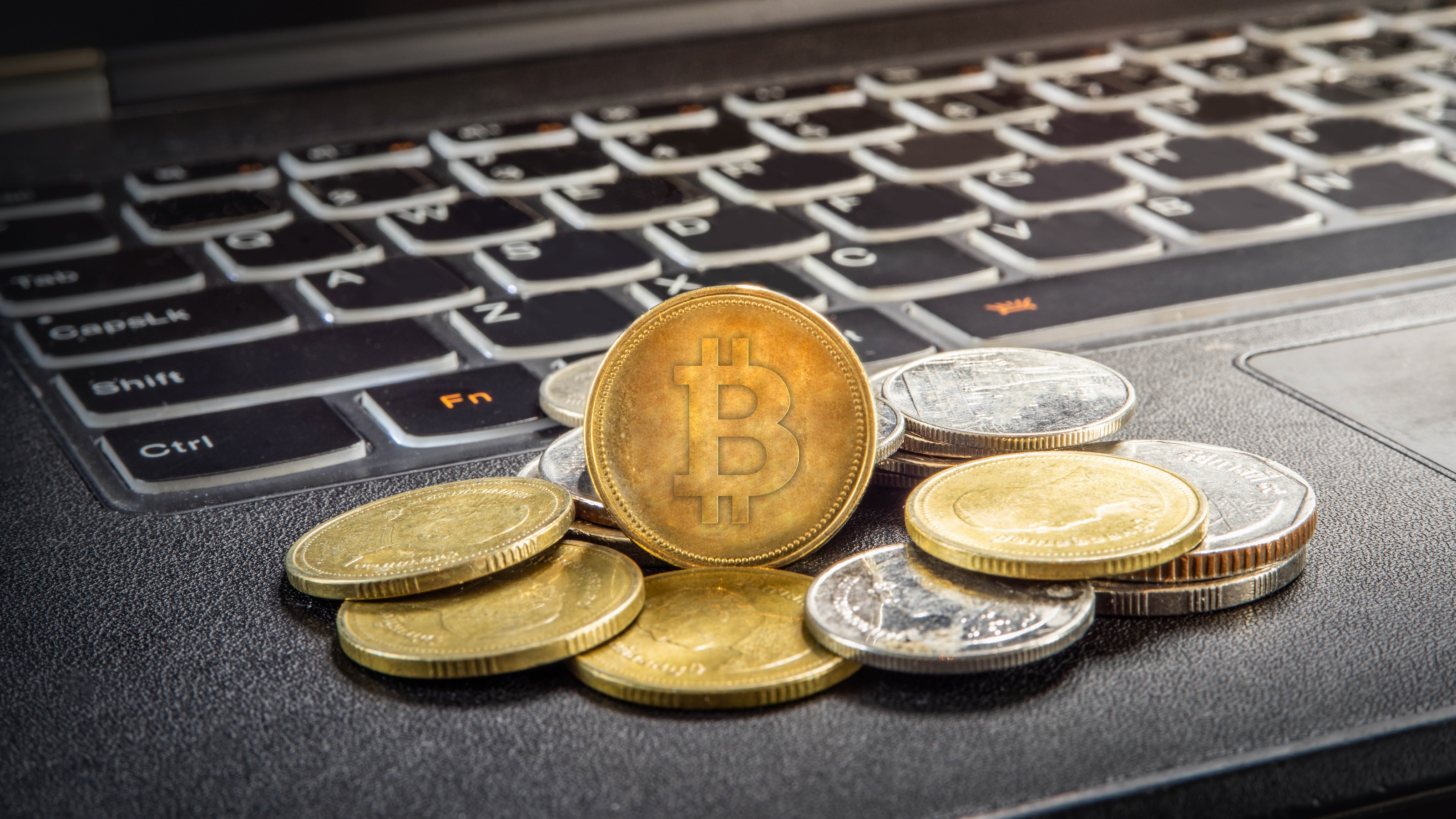A Guide to Yield Farming's Risk and Rewards
Earning cash on crypto using yield farming is popular. It's also risky. Here's what to know (and what to avoid).


Even with the recent downturn in the crypto markets, the total value of assets locked in decentralized finance (DeFi) protocols currently sits at over $42 billion. For the uninitiated, decentralized finance is a growing collection of financial tools and protocols allowing users to trade, borrow, and lend money on the blockchain without the need for third-party approval.
Perhaps the largest catalyst for DeFi’s growth has been the rise in popularity of yield farming, a rather risky ROI-optimizing strategy that offers significantly greater returns than traditional investing. Due to its high-risk, high-reward nature and the general preference toward speculation in crypto, yield farming has quickly become one of the most favored use cases of decentralized finance.
What is yield farming?
Yield farming is the process of staking and lending cryptocurrency through decentralized finance protocols to optimize returns. While technically yield farming can take place using a single DeFi platform, most serious yield farmers continuously shift their cryptocurrency between numerous loan platforms to make the most of their returns. By jumping back and forth between platforms, users are able to earn and optimize platform-native rewards and generate greater yield.

Sign up for Kiplinger’s Free E-Newsletters
Profit and prosper with the best of expert advice on investing, taxes, retirement, personal finance and more - straight to your e-mail.
Profit and prosper with the best of expert advice - straight to your e-mail.
It's also worth noting that while this kind of trading is risky, using a decentralized exchange can help traders avoid what has become a current string of meltdowns at centralized exchanges, most notably the likes of FTX. In fact, some decentralized exchanges have seen a surge in activity as users flee centralized exchanges, including Uniswap, which in mid-November saw a surge in new activity on its exchange:
New users of Uniswap’s Web App reached a 2022 high. Self-custody and transparency are in demand and users are flocking to what they know and trust. Let’s keep building. pic.twitter.com/IwPqTmx58JNovember 14, 2022
How does yield farming work?
Yield farming involves the lending, borrowing, and staking of tokens into decentralized applications like decentralized exchanges (DEXs) or open-sourced liquidity protocols. Each of these dApps is powered by smart contracts which allow for the autonomous execution of transactions without any central bank or intermediaries.
Popular and trusted protocols include Curve, Aave, Balancer, Compound, and Uniswap. Meanwhile, liquidity aggregators like Yearn, provide lending aggregation seamlessly shifting pools of users' funds across different protocols to maximize profit and yield.
While most DeFi protocols were initially based on the Ethereum blockchain, high transaction fees, called gas fees, have forced protocols to switch to alternative blockchains or sidechains like Polygon and Solana.
Types of yield farming
Providing liquidity: Liquidity providers supply the necessary trading liquidity that powers decentralized exchanges. To be a liquidity provider (LP) of a dual-asset liquidity pool, say BTC/ETH, you must supply an equal value of both assets.
In exchange for providing liquidity to liquidity pools, LPs earn a small percentage of each transaction. In addition, LPs receive LP tokens, separate exchangeable and stakeable assets that represents the proportion of a LP’s contribution stake relative to the entire pool.
For example, if you provide $100 worth of crypto assets to a total pool worth $1,000 USD, you own 10% of the pool. To represent this ownership, you are rewarded with LP tokens that are able to be claimed for 10% of the pool’s assets at any time.
Lending: By locking tokens up into self-executing smart contracts, yield farmers can directly lend their tokens to another individual in exchange for receiving the interest paid on the loan.
Borrowing: Yield farmers can put up one cryptocurrency as collateral to receive a loan in another token. Then, users can deposit the borrowed coins into a DEX or liquidity protocol to farm additional yield, while still maintaining their initial holding.
POS staking: On proof-of-stake blockchains, users can lock up their tokens to provide additional security to the network, in exchange for interest.
LP staking: Staking the LP tokens received when providing liquidity to a DEX allows users to earn yield twice, as they are paid for supplying liquidity in LP tokens which they can then stake to earn more yield.
Native token staking: Protocols like Curve and Aave incentivize farmers to use their networks with native tokens like CRV and AAVE. These tokens reward users with benefits such as fee savings and governance voting power around future platform-related decisions. These tokens are additionally able to be staked in-platform in exchange for additional yield.
Risks of Yield Farming
As with most crypto investments that come with huge upside potential, yield farming is a very risky game and is not for the faint of heart. It requires serious research, knowledge, and risk appetite, especially in turbulent markets like these. Make sure you understand where the yield is coming from, as some less-known protocols can operate similar to Ponzi schemes, paying promised returns to existing investors using new investors’ funds.
As a rule of thumb: If you can’t identify exactly where the yield is coming from, your money is someone else's yield.
Below, we outline some of the specific and big-picture risks yield farmers face, including a few good reminders of the risks inherent in the cryptocurrency sector in general.
Exit scams: Exit scams, often referred to as rug pulls, occur when the developer of a decentralized application or protocol abandons the project without returning any users’ funds. Lack of research into where you are lending and staking your tokens for yield can leave you empty handed and with no recourse. Unfortunately, this happens quite often in DeFi, so it’s always important to do your research and stay vigilant of warning signs. Beware of new protocols offering unreasonably high yields.
Platform hacks: Smart-contract hacks are the second largest risk in DeFi. While the quality and security of smart contracts has improved over the years through third-party audits and an influx of talented developers, smart contrack hacks are still quite common. Once a smart contract is hacked, it’s generally impossible to recover funds.
Regulatory risk: Cryptocurrency regulation is still very much a Wild West, with the SEC beginning to tighten the currently vague definition of digital asset “securities.” While much of the premise of DeFi is centered around autonomy and a lack of central authority, more stringent government regulation could have a serious impact on the growth of the ecosystem. (There could be tax implications for cryptocurrency investments as well.)
Volatility: In crypto market downturns or times of extreme volatility, yield farming becomes even riskier than usual. Large price swings can lead to heavy slippage, impermanent loss, or even smart contract liquidation.
Impermanent loss occurs when the value of holding a cryptocurrency in your wallet is greater than that of being a dual-asset liquidity provider. Depending on how the price of an asset changes over time, especially during times of high volatility, you may be better off holding the asset outright instead of having used it to provide liquidity to a liquidity pool.
The bottom line
As with all cryptocurrency investing, yield farming is inherently risky. But when executed responsibly and properly, it can result in impressive returns. As a reminder, never invest more than you can afford to lose and don’t let FOMO get the best of you. There will always be a new protocol promising sky-high annual percentage yields. Trust your gut, and if it’s too good to be true it probably is.
Get Kiplinger Today newsletter — free
Profit and prosper with the best of Kiplinger's advice on investing, taxes, retirement, personal finance and much more. Delivered daily. Enter your email in the box and click Sign Me Up.

Randy is a New York-based freelance writer and author covering the world of emerging technology and entrepreneurship. Deeply interested in the way technology will impact his grandkids' lives, Randy has been featured in several publications, including NFT Now, Forbes and Newsweek.
-
 Stock Market Today: Stocks Gain on Tech, Auto Tariff Talk
Stock Market Today: Stocks Gain on Tech, Auto Tariff TalkThe Trump administration said late Friday that it will temporarily halt tariffs on some Chinese tech imports.
By Karee Venema
-
 Sam's Club Plans Aggressive Expansion: Discover Its New Locations
Sam's Club Plans Aggressive Expansion: Discover Its New LocationsSam's Club expansion plans will open up to 15 new stores each year. Learn where they plan to open in 2025.
By Sean Jackson
-
 What’s Next for Cryptocurrency After the Collapse of FTX?
What’s Next for Cryptocurrency After the Collapse of FTX?Is the cryptocurrency bubble bursting now, or does crypto still have a viable future?
By Rodrigo Sermeño
-
 When You Die, What Happens to Your Bitcoin?
When You Die, What Happens to Your Bitcoin?Without your private key, your heirs are locked out of your digital wallet. Being prepared, though, ensures they can gain access to your assets when the time comes.
By Stacy Francis, CFP®, CDFA®, CES™
-
 Making a Killing in Cryptocurrency? There’s a Tax on That
Making a Killing in Cryptocurrency? There’s a Tax on ThatIf you sell it, capital gains (or losses) kick in, and if you gift or inherit a lot of it, the IRS might want a piece of the action.
By Tracy Craig, Fellow, ACTEC, AEP®
-
 The White House Touts A Digital Dollar: What Does That Mean?
The White House Touts A Digital Dollar: What Does That Mean?cryptocurrency A CBDC, or Central Bank Digital Currency, is a step closer in the U.S., but going digital will take years.
By Ellen Kennedy
-
 What Ethereum's 'Merge' Means for You, the Market, and the Climate
What Ethereum's 'Merge' Means for You, the Market, and the Climatecryptocurrency The "Merge" seems to have worked. What you need to know about crypto's biggest story of 2022.
By Rodrigo Sermeño
-
 Crypto Has Been Through the Wringer in 2022: What Now?
Crypto Has Been Through the Wringer in 2022: What Now?cryptocurrency With prices of Bitcoin, Ethereum and other cryptocurrencies down, you may be tempted to give it a try. The best advice for those who are curious may be to tread lightly, and make sure you understand what you’re getting into.
By Shane W. Cummings, CFP®, AIF®
-
 Stablecoins: Definition and How They Work
Stablecoins: Definition and How They Workcryptocurrency We break down the different types of this emerging investment and explain its risks.
By Randy Ginsburg
-
 The DeFi Dictionary: Your Guide to Decentralized Finance
The DeFi Dictionary: Your Guide to Decentralized Financecryptocurrency Decentralized finance, or DeFi, is rife with wild growth opportunities and scam potential alike. This primer should help investors get their bearings.
By Randy Ginsburg